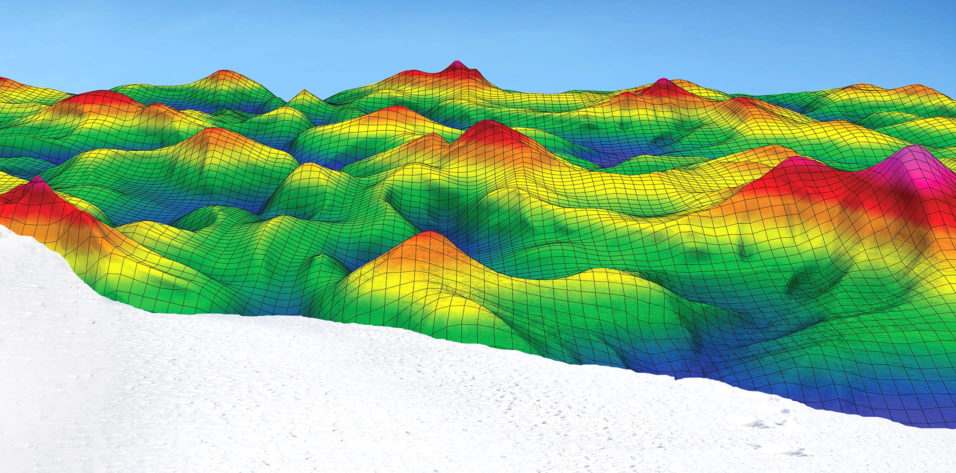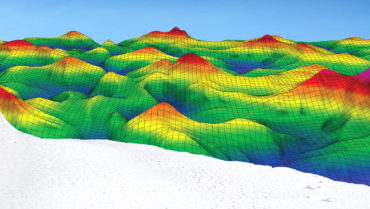sponsored by


In nearly two decades of LASIK surgery, we have seen many advances such as bladeless LASIK and wavefront analysis. Manifest refraction has remained the practical choice used in eyeglasses and contact lenses to give patients functional vision for most conditions, but for LASIK surgery, the bar has continually been raised.
Today, another change is altering the standard for LASIK surgery: the transformative transition from manifest astigmatism to measured astigmatism power and axis. Rather than basing surgery on manifest refraction, a measure of the patient’s visual perceptions, or wavefront analysis, which is incorporating the entire ocular optical contribution, surgeons are looking to objective topography corneal astigmatism and performing topography-guided surgery with superb outcomes.
Using CONTOURA Vision (Alcon) to measure astigmatism and axis, surgeons are finally able to unleash the eye’s true visual potential and, thus, the potential of refractive surgery. People do not change decades-long habits overnight, and transitioning LASIK from manifest to measured refraction is no different. In this case, outcomes data are the inspiration driving the change.
Inspiring Outcomes
Surgeons who already embrace measured refraction and topography-guided LASIK are drawn in by the data for the first approved system, CONTOURA Vision (the WaveLight Topolyzer Vario Diagnostic Device, used in conjunction with the WaveLight Allegretto Wave Eye-Q laser). In a clinical study of 249 eyes measured and treated with CONTOURA Vision, more than 30% of patients had uncorrected visual acuity at 1 year that exceeded preoperative BCVA.1 In the same clinical trial, 92.6% of eyes had a visual acuity of 20/20 at 1 year (64.8% were 20/16 or better; 34.4% were 20/12.5 or better). Contrast sensitivity improved in most cases as well.
This leap forward in visual outcomes redefines established goals for LASIK surgery. If surgeons can get 92.6% of patients to 20/20 or better using the manifest refraction, and keeping in mind the enhanced quantity and quality of vision evidenced in published studies of CONTOURA Vision,2,3 then it makes clinical sense to move to replace manifest refraction as the basis for LASIK. In addition, topography-guided ablation corrects higher-order corneal aberrations.
Adverse events were rare and largely not related to the LASIK procedure. The most common complication was dry eye, with 8.7% of patients needing eye drops or no treatment.1 Refractive Status Vision Profile (RSVP) scores show that patients saw improved physical/social functioning, driving, visual symptoms, and optical problems, as well as fewer problems with corrective lenses at 3 months postoperatively, with continued improvement through 12 months. These numbers are particularly significant because they show a clear reduction in common visual symptoms associated with LASIK treatment.1 The data provide ample motivation for surgeons to move to LASIK based on measured refraction.
Changing Outlooks
Because manifest refraction is embedded in years of experience for many surgeons, even primary adopters of measured refraction were skeptical at first. However, the results soon speak for themselves. Visual outcomes exceed LASIK based on manifest refraction. Postoperative topography shows a smooth cornea. Measured refraction becomes the practical choice.
The CONTOURA Vision interface shows surgeons a patient’s manifest refraction and measured refraction for side-by-side comparison. Surgeons who use CONTOURA Vision tell us they will never treat a patient again without at least looking at the CONTOURA power and axis; when they are in doubt about the difference, they mostly go with the measured corneal astigmatism power and certainly with the measured axis.
The widely accepted understanding is that higher-order aberrations do influence the quality of vision, especially in dim conditions where the pupil is wider and the aberrations become evident. The influence of higher-order aberrations on the quantity of vision, especially coma and tri-foil aberrations, is widely neglected. Experience with CONTOURA Vision’s ability to effectively correct higher-order aberrations has shown a direct link between coma and the manifest astigmatism power and axis. A coma aberration of comparable amplitude to the corneal astigmatism can significantly influence the manifest power and axis. Therefore, we begin to understand that the manifest refraction is not the best correction but one that gives “acceptable” vision with glasses that correct only sphere and cylinder.2,3
Further scientific investigation will help us to fully comprehend the effect of higher-order aberrations on the quantity of vision and further improve treatment quality not only for refractive surgery but also for cataract procedures.
The Kanellopoulos study showed us CONTOURA Vision is highly predictable, with a tight scattergram where outliers are suddenly not outliers anymore, especially for lower astigmatism.2 The enhanced quality and clarity that patients describe tells us the procedure is unleashing the true potential of their vision and of LASIK. The eye functions improves with a better correction solution for all refractive patients, one that depends on a transition from manifest to measured refraction.
1. Stulting RD, Fant BS, The T-CAT Study Group. Results of topography-guided laser in situ keratomileusis custom ablation treatment with a refractive excimer laser. J Cataract Refract Surg. 2016; 42:11–18.
2. Kanellopoulos AJ. Topography-modified refraction (TMR): adjustment of treated cylinder amount and axis to the topography versus standard clinical refraction in myopic topography-guided LASIK. Clin Ophthalmol. 2016;10:2213-2221.
3. Motwani M. The use of WaveLight Contoura to create a uniform cornea: the LYRA Protocol. Part 3: the results of 50 treated eyes. Clin Ophthalmol. 2017 May 16;11:915-921. doi: 10.2147/OPTH.S133841.


